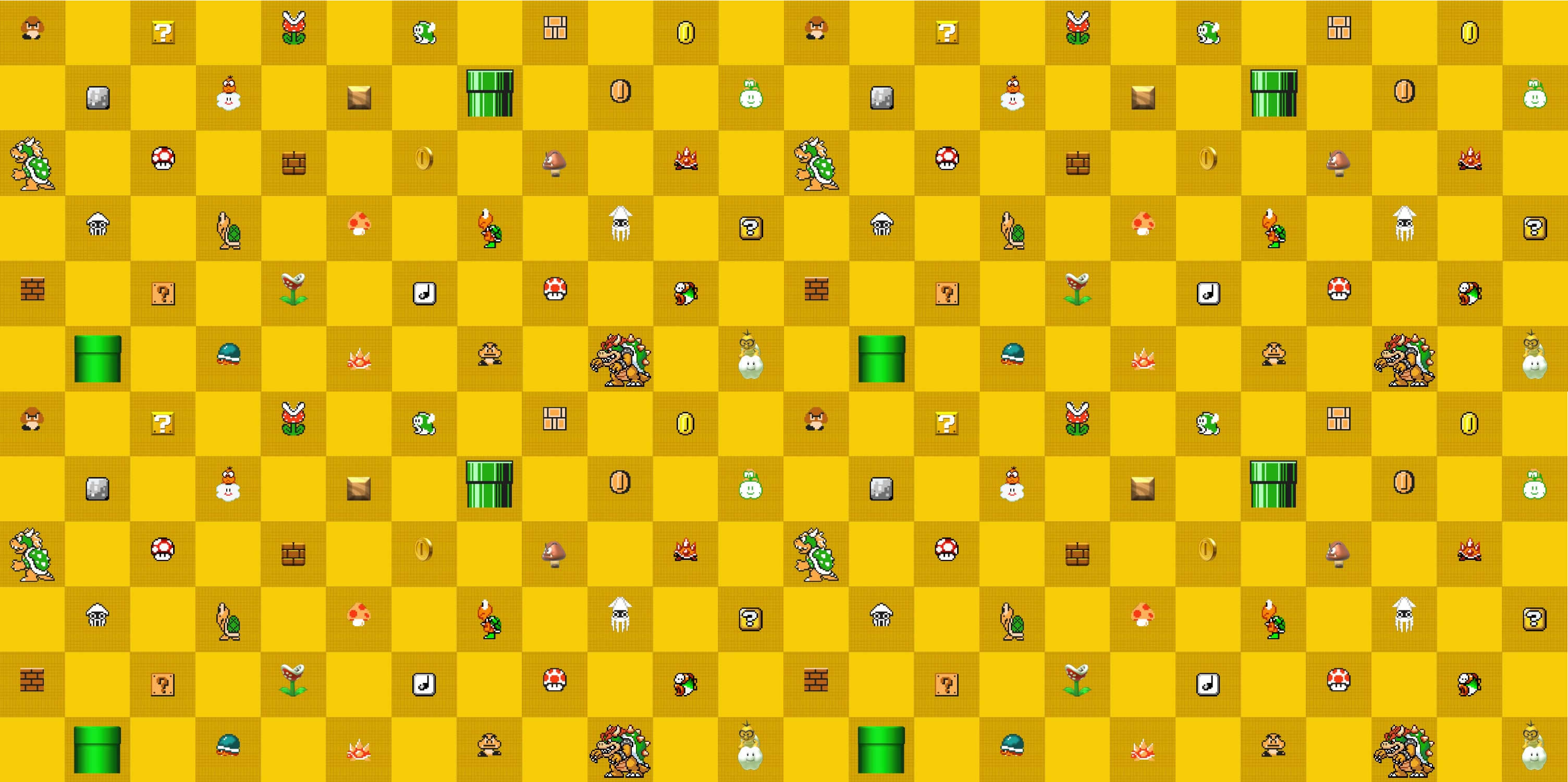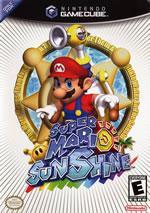Super Mario Sunshine was arguably one of the most popular games available for the Nintendo GameCube thus far, but it also holds the title of one of the most controversial.
Let us flashback to 1996. After much long anticipation, Super Mario 64 finally came out for the masses. With near-perfect controls and varying missions, Super Mario 64 set the standard for most 3D-Platform games. For a long time afterwards, however, fans awaited the sequel, the so-called ''Super Mario 128''. They were expecting a game just like its predecessor - the standard platformer in worlds with varying themes and layouts - and nothing more.
Well, here we are. In August 2002, Super Mario Sunshine hit store shelves across America. Criticism immediately arose for the child-like appearance, the water-pack, and the overall shortness of the game. However, some strong points are prominent as well.
Story
Our mustached hero, Princess Peach, Toadsworth, and an entourage of multi-colored Toads felt the need to take a well-deserved vacation on Isle Delfino, a tropical paradise where the sun always shines and the hospitality never ceases. Upon arrival at the Airstrip, however, they find their sun-drenched utopia... albeit covered in a paint-like ''goo'', as the Toads put it.
The most common residents of the island, Piantas, usually provide good-natured kindness to locals. When Mario asks around about the substance, resentment fills the air. Finally, he finds a ''Wanted'' poster donning a sketch of the accused graffiti artist. This character happens to have a shirt, overalls, a mustache, and a hat with an unusually familiar ''M'' on it...
One of the angered locals points Mario to a strange, yellow device. This device has an artificial intelligence, and introduces itself to Mario as FLUDD: a Flash Liquidizing Ultra Dousing Device, created by Professor Gast. With a new partner, Mario starts to help and clean the mess, finding a weird, star-shaped icon in the process. Minutes later, during a conversation with Peach and Toadsworth about FLUDD, two security guards come and arrest poor Mario.
The next day, in a court house, Mario finds out why the accusations point to him. The graffiti has scared away the Shine Sprites, the source of life for the small paradise. Without these sprites gathering at the Shine Gate, Isle Delfino’s large monument to the sprites, the well-being of life on the island suffers greatly. The judge sentences a ''guilty'' Mario to clean the island, and he may not leave until all the paint vanishes.
Afterwards, when Mario starts cleaning, a shadowy figure appears in Delfino Plaza, the main city. He has overalls, a mustache, and a hat with an M... but it’s not Mario. They call the creature ''Shadow Mario''. With paintbrush in hand, Shadow Mario starts to kidnap the princess. Therefore, Mario must clean the mess, rescue the princess (again), find out who Shadow Mario is, and eliminate him. 9/10
Graphics
Mario games usually pave the way for breath-taking graphics, and this game follows suit. Lush colors and shapes fill the screen. The vibrant detail is also amazing. Notable examples of this are Sirena Beach’s orange sunsets and Ricco Harbor’s massive scaffolding systems. Paint wobbles as if it has a life of its own, enemies vary tremendously in style and shape, and worlds are gigantic.
Speaking of worlds, might I add that the crafting of these levels shows cleverness of the Nintendo staff, as well as the genius of Shigeru Miyamoto. Bianco Hills, the first level, may seem easy, but as you progress, you find out that challenge does seem prominent, and there are so many things to do. Also hidden in each world, obstacle courses have different backgrounds and textures.
The most stunning visual is, of course, the water. Although not realistic, the water appears to draw you in and go out into eternity, just like a real ocean. With all of these pluses, the graphics in this game, however, have one flaw. Many magazines say this, and I agree: textures tend to look primitive when viewed from a close angle. This minor drawback does not destroy the fact that the graphics are revolutionary. Copiers will follow; I am sure. 9/10
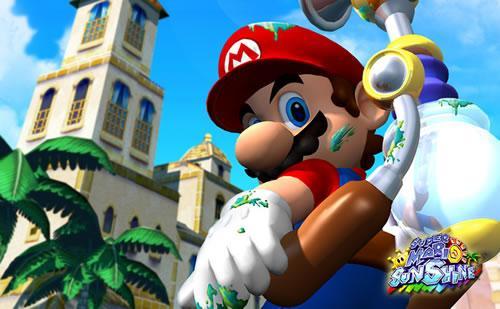
Music
A happy-go-lucky theme presides in the game, and the music reflects that rather well. Bouncy, tribal themes and remixes of classic Mario tunes make up the soundtrack. One will notice, however, the fact that the songs are very, very short. Each track lasts about fifty seconds, then goes into infinite repetition. 7/10
Sound Effects
The ''boo-boo-boo'' of a Pianta and the ''ooooh'' of a Noki are very pleasing to the ear. Splashes sound real, and the spray of FLUDD does not get annoying. Mario’s signature Italian-accented yelps shine, and Yoshi’s cry makes you reminisce. In obstacle courses, if you listen closely, the sound of Mario walking on wood-like terrain reflects the surface very well. Fire-breathing enemies use fire with good-quality audiotechnics. Overall, the phenomenal sound shows Nintendo having skill, expertise, and talent. 10/10
Controls
Let me first address the glaring fault: the in-game camera. Yes, it tends to become stuck behind objects occasionally. Yes, it will make you die. However, the camera system probably makes an appearance on the ''Top Three In-Game Cameras of All Time'' list, if such a thing.
Instead of four buttons controlling the camera, you mainly use the C-Stick (yellow analog stick on the right). Pushing it left and right pans the camera around Mario while up and down control the zoom. Using the ''Y'' Button, you can take in the view from not really a first-person perspective, but more of an ''ear-cam'' because you still see Mario’s face. ''L'' also centers the camera behind Mario.
Of course, moving Mario uses the Control Stick, and the D-Pad has no real use. Jumping, as always, requires extensive use of the ''A'' Button. However, the option to punch back from ''Super Mario 64'' has vanished. Instead, ''B'' is a ''grab'' button, letting you pick up certain items (mainly fruit). ''Z'' accesses your ''Guidebook'', a map showing Shine Totals and vague descriptions of visited levels.
FLUDD has unique, yet elegant, controls. Pressing ''R'' slightly sprays water while allowing Mario to move, yet a full press holds Mario in place and allows use of the Control Stick to aim. With the Hover, Rocket, and Turbo Nozzles, holding down ''R'' is a necessity. To alternate between the standard and special nozzle (whatever one you have at the moment), a quick push of ''X'' gets that done. Jump-and-hover combos are endless and a necessity if you wish to complete the game. Executing moves are no problem. 10/10
PUAP (Pick-Up-and-Play) Ability
Before entering any worlds, I suggest you take some time in Delfino Plaza and learn how to master some techniques such as wall kicks, jump-and-hover combos, and spin jumps. If you do that, the game will become much easier. Little children will have difficulty controlling this game. 8/10
Gameplay
The core of Super Mario Sunshine has a flavor of 3D Platformer, boasting several different missions. However, as you progress, you notice the same kind of goal. In fact, as recognized by several people, the task you currently perform in the game usually falls under one of these eight categories:
o Racing. The one race in Ricco Harbor on top of different shades of squid takes a while to put down, but the other three against Il Piantissimo (that’s an ''I'' and an ''L'', not ''II'') scream monotony.
o Shadow Mario Chases. Depending on your skill level, this will take twenty seconds or three minutes. Not that hard, but make sure you know your skills.
o Obstacle Courses. The number-one rule to remember: ADJUST THE CAMERA. They ease up if you do so.
o Collect Eight Red Coins. The task from Super Mario 64 returns, but this time it brings slight fun, especially in Delfino Plaza’s ''Mario Pa-Chinko'' and Gelato Beach’s ''Sand Bird''.
o Navigate a maze. The true standout in this category resides in Noki Bay. The disappearing stone maze brings much fun and challenge.
o Investigate a weird, localized puzzle. The main problem in most worlds, these can vary from finding mayors stranded in infernos to cleaning up beaches.
o Defeat a boss. Very magical indeed, especially Gooper Blooper’s several appearances and a double-dose of Petey Piranha. However, the manta ray will irritate you tremendously.
o Collect all 240 Blue Coins. In each world (seven of them), there are thirty blue coins. Collect them and return to the raccoon hut. Every ten Blue Coins traded in will net you a Shine.
Even though it’s rather monotonous, the variance of things to do is delightful. 8/10
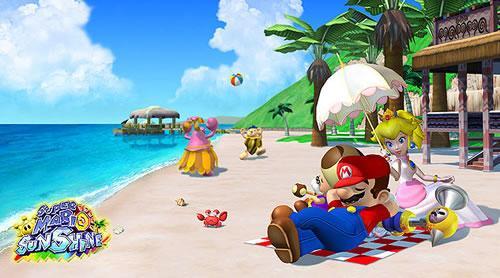
Play Time
Unfortunately, you can beat the game with the minimum of 51 Shine Sprites (the first one, seven mandatory Sprites in each world, and the final one after beating the final boss). If they had changed that, I would have liked it much better. 4/10
Challenge
I give Super Mario Sunshine a medium Challenge rating. Some stuff is pathetically easy; others are frustratingly hard. 6/10
Replayability
As the case with most platformers, collecting all the Sprites may be fun in the beginning, but doing it all again? Tedious. 5/10
Overall - 8/10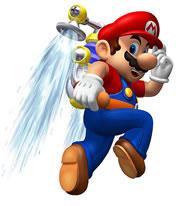
Rent/Buy
It all depends on your comfort level with platforming games. I recommend this for all GameCube owners, as it is a marvelous title.

